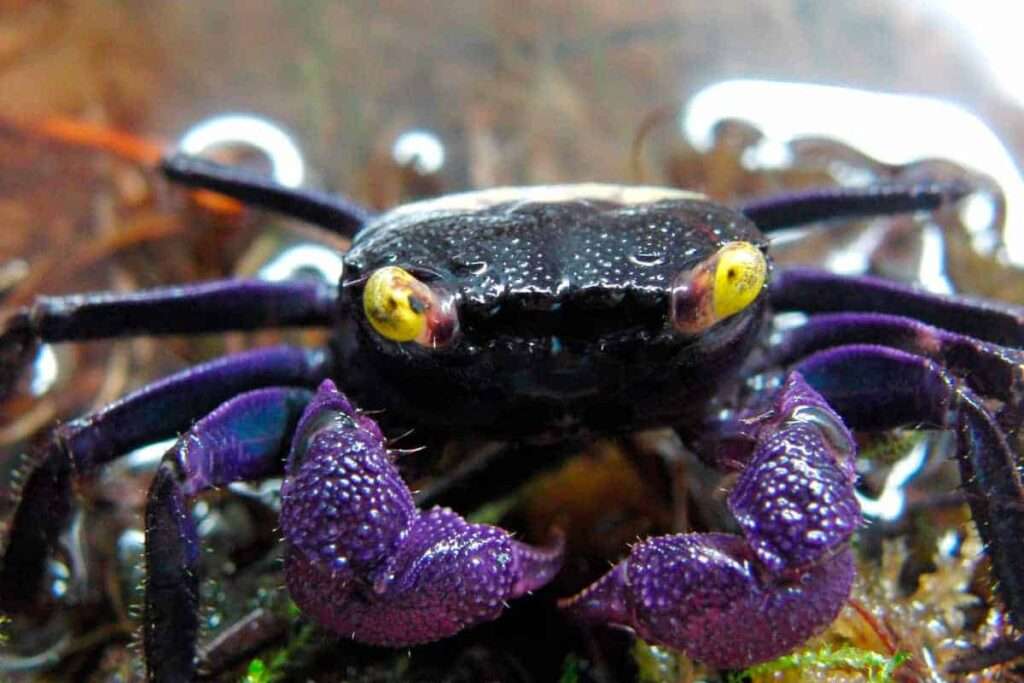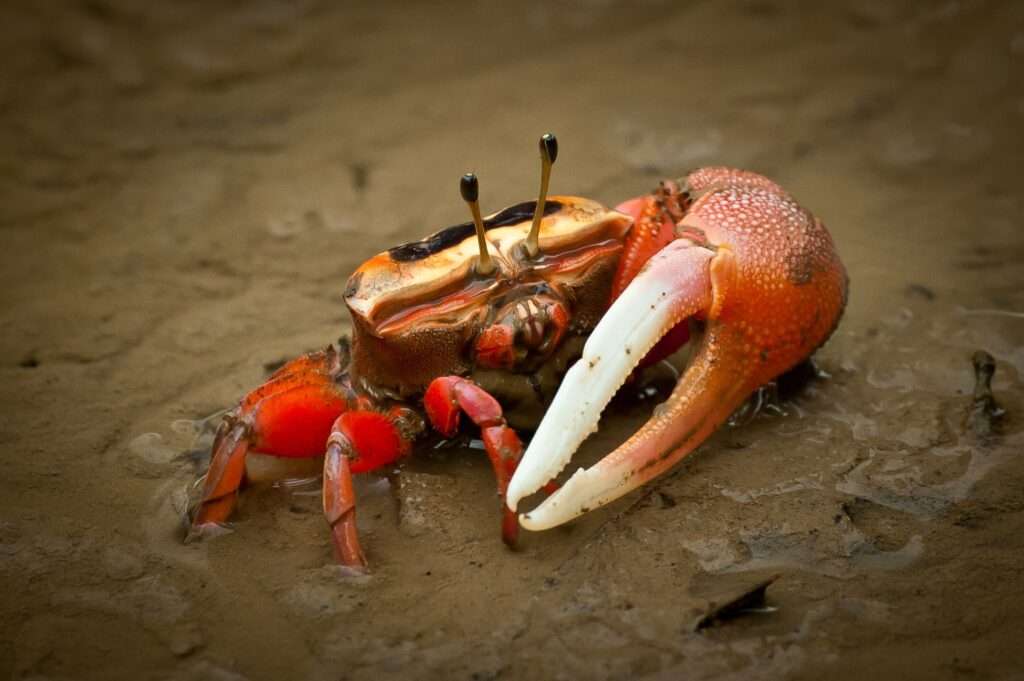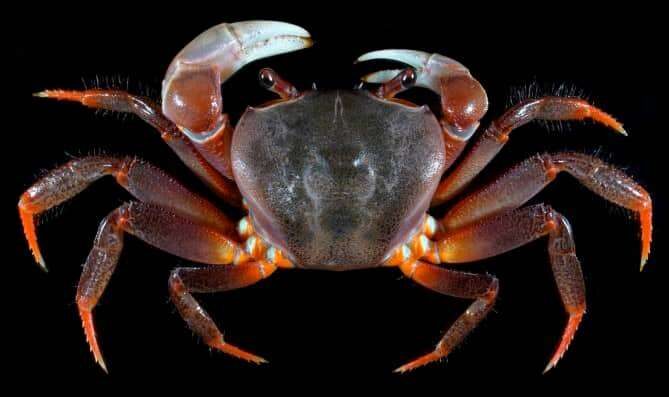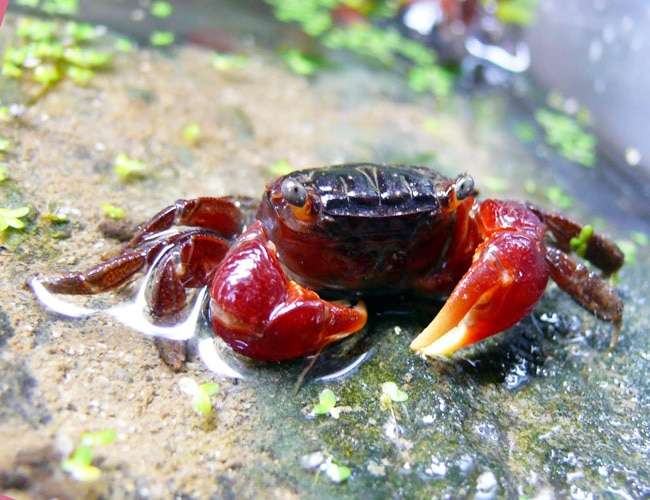
Because of their origins, vampire crabs are a small terrestrial animal that belong to the exotic crab family. These crabs, which are primarily found in Indonesia’s Java, Riau, Sulawesi, and Krakatau, are well-known aquarium trade specimens because of their unusual hues.
These crabs are striking due to their glowing, vampire-like eyes that are yellow in color. Many crabs desire to have characteristics like their unusual deep purple coat, pink claws, and white splotches. They make excellent compliments to an aquarium because they are also attractive creatures.
If you do keep one of these, take care not to keep it around huge fish because they can mistake it for food. These could be paired with snails, shrimp, or their own kind of crab, but always make sure there is one male to a few females.
They would require a dry place where they could hide and burrow, like many freshwater crabs do. Make sure to provide a sand substrate for them to burrow into throughout their molting seasons. Although they eat a variety of plant and animal debris, vampire crabs prefer little bugs.
Appearance
These crabs’ distinctive coloring, which gives them an alien appearance, is what makes them so well-known. Surprisingly, they are also semi-terrestrial.
The vampire crabs are an extremely vivid shade of purple! Not because they suck blood, as one might imagine, but for this reason they are dubbed vampire crabs. It also explains why they are occasionally referred to as panther crabs or carnival crabs.
Their 10 legs and claws, which are the more purple part of their body, claws are very harmless because of how narrowly they can open. Some crabs even have claws that are pink in color, which gives the animal a wonderful color gradient.
Feed
In order for them to develop, live longer, fight off sickness, and develop a robust exoskeleton after molting, a balanced diet is crucial. The following is a list of live and frozen foods you can feed the purple vampire crabs:
- Shrimp in saline water
- Bloodworms
- Earthworms
- Larvae \Crickets
- Algae wafer, pellets, and flakes
- Broccoli, lettuce, spinach, and peas
Because these crabs are lazy, they will eat whatever is around, but you need to put food in various locations to get them moving. They also help to maintain the tank clean by eating the algae and organic waste that can grow there. It is crucial to consume calcium-rich foods like green vegetables since they aid in the development of a strong exoskeleton.
Keeping as Pet

Tank Size
Vampire crabs need tanks that are at least 10 gallons in size. You will have plenty of space to move around and be able to keep a group of six together without any problems thanks to this. Many owners keep them in tanks that are only 5 gallons in size (and care guides recommending this tank size as well). We are at odds. Even though these crustacea are tiny and don’t require much area, even a small amount of extra space can help.
Tank Setup
The secret to maintaining the health of vampire crabs is to mimic their environment in the wild. All aquarium animals exhibit this. It is crucial for this species, though. There’s something quite distinctive about Vampire Crabs, as we alluded to previously. They are not exclusively aquatic animals! In reality, they are regarded as semi-terrestrial. These crabs require a paludarium setup rather than a standard aquarium because of this. About half of the time that these species spend on land. You must therefore offer a perch. These crabs can be found in the wild in lakes and rivers that are covered in dense forest. There must be a lot of vegetation on the land and in the river.
Water Conditions
Vampire crabs are vulnerable to drastic changes in water quality, just as many other invertebrates. Every month, you must make partial water changes. We advise changing up to 40% of the water each time to maintain low levels of ammonia and nitrate.
Follow these guidelines to maintain the health of your crabs:
- Water between 70°F and 82°F (somewhere in the middle is best)
- pH range: 7.5-8.0
- Water hardness range: 0-10 dKH
Table





